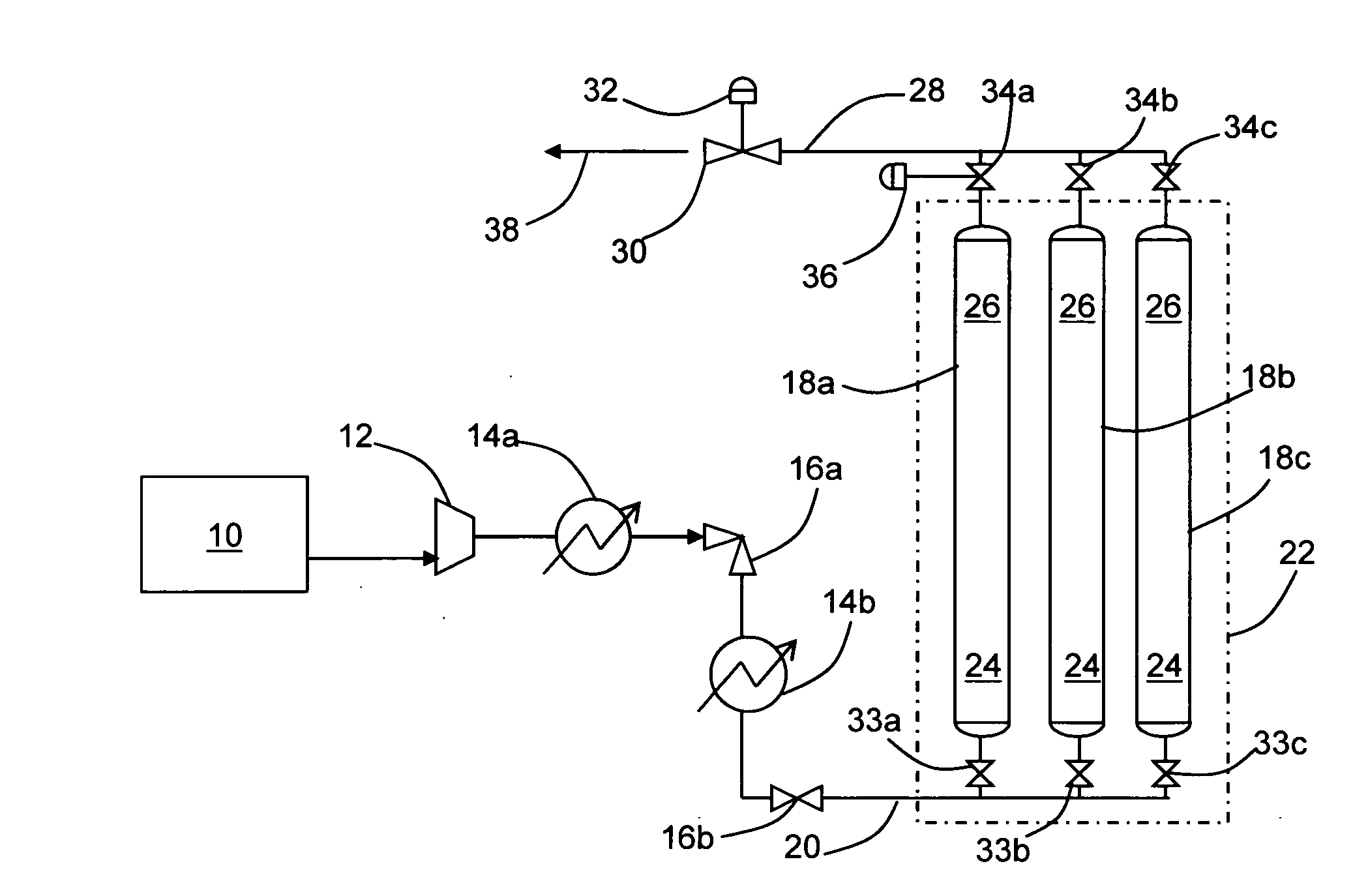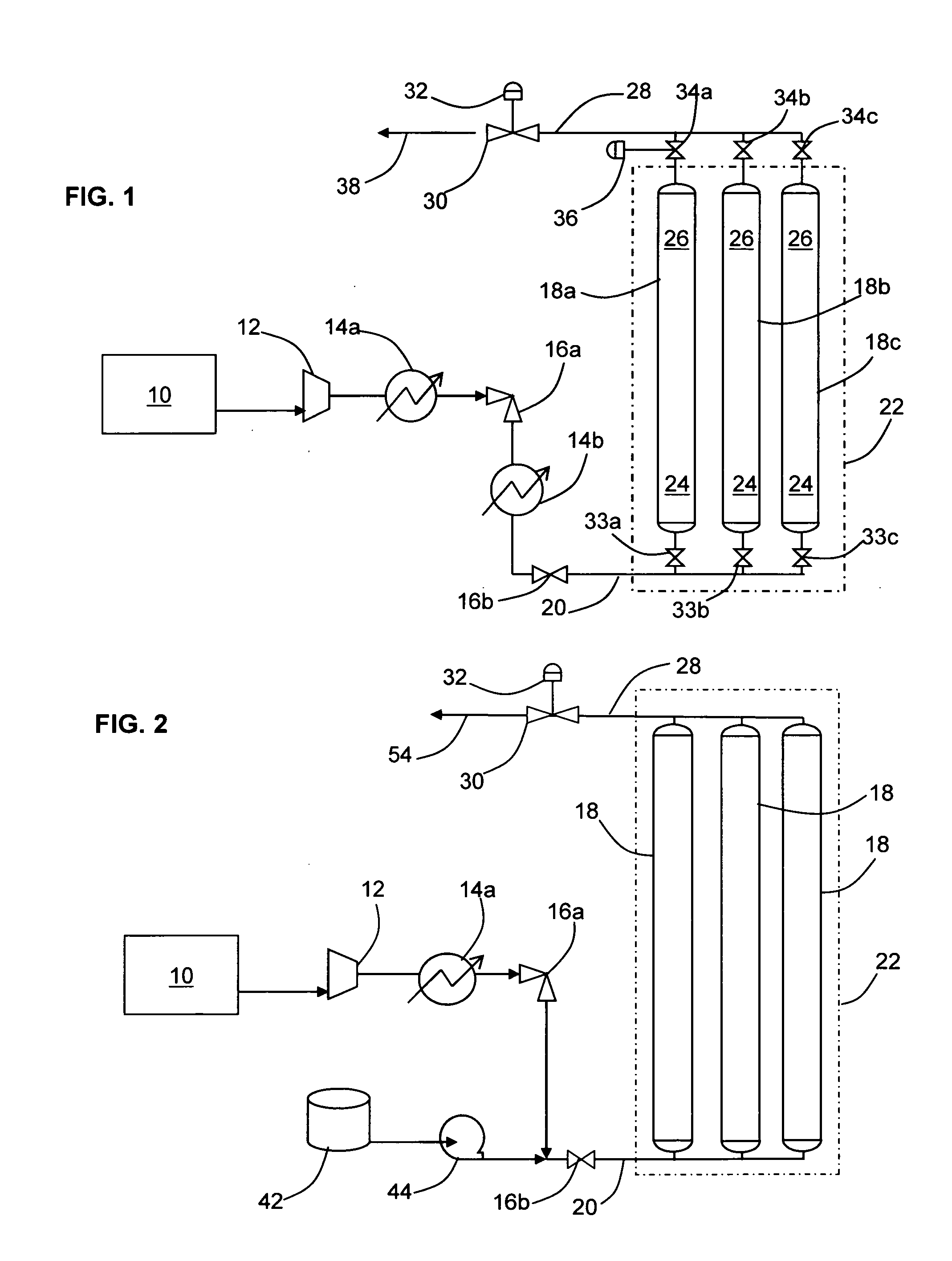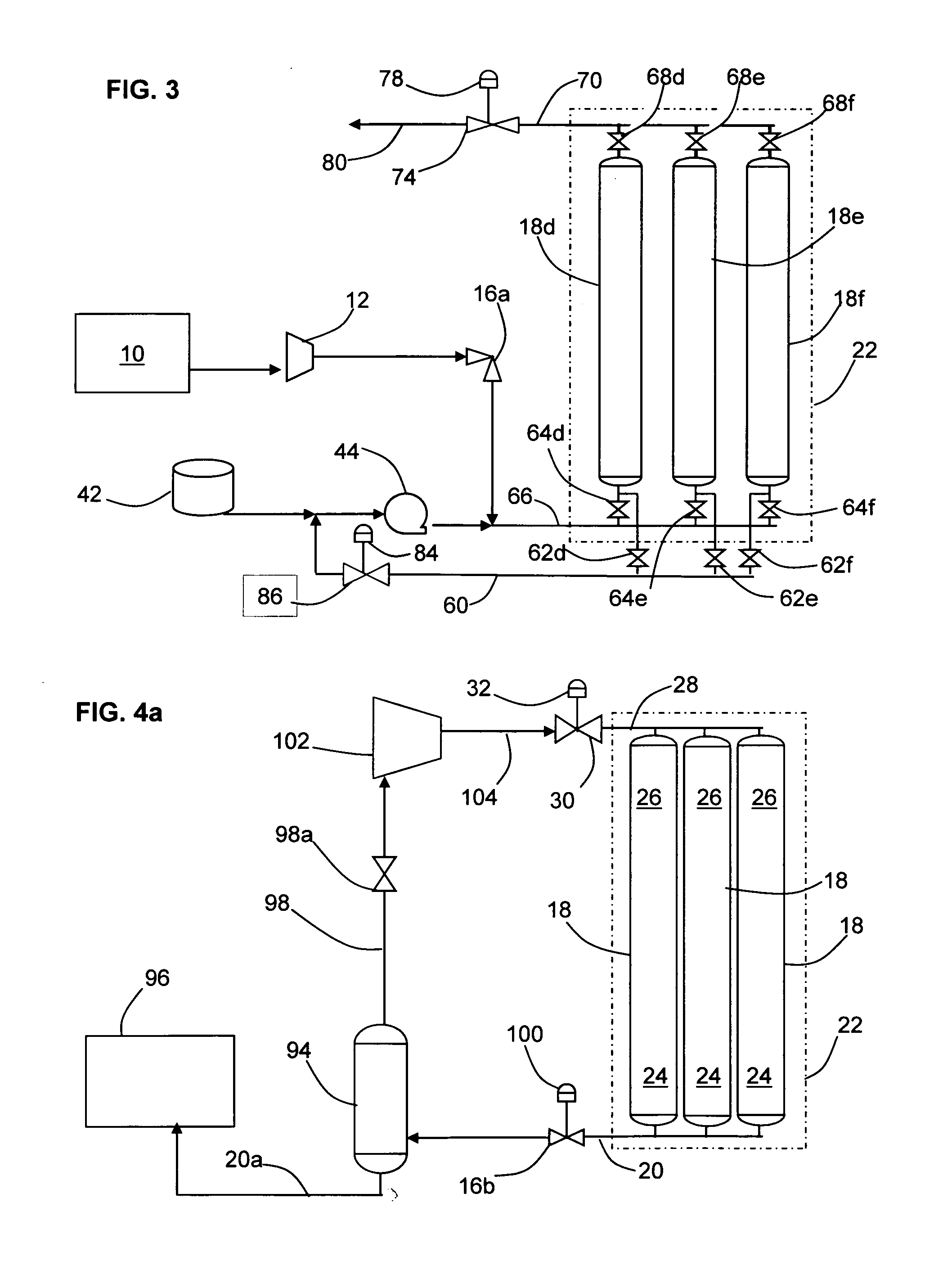Apparatus and method for flowing compressed fluids into and out of containment
a technology of apparatus and fluids, applied in the direction of liquid transferring devices, non-pressure vessels, packaging, etc., can solve the problems of insufficiently addressing the challenges of efficient loading, limited effective strength of materials used to fabricate these essentially rigid containers, and heat energy build-up within storage containers
- Summary
- Abstract
- Description
- Claims
- Application Information
AI Technical Summary
Benefits of technology
Problems solved by technology
Method used
Image
Examples
Embodiment Construction
[0035]The present invention provides innovative means for loading a compressed fluid cargo into stationary or transportable cargo containers and for discharging the cargo from the containers. The compressed fluid cargo is typically refrigerated to a stable storage condition at a temperature substantially below 0° C. Since a transport system should address both loading and unloading efficiencies, this invention also addresses means for discharging or withdrawing cargo from the containment system used for storage and / or transportation such that the amount of residual fluid in the containment system (above any amount required as fuel for a return trip) at the end of the withdrawal process is minimized.
[0036]The containers described herein may be designed and used to efficiently hold a wide variety of fluids (e.g., gases and gas compositions) in dense pressurized states that may be gaseous, liquid, or mixed phase. The pressures at which natural gas and / or natural gas liquids and their a...
PUM
| Property | Measurement | Unit |
|---|---|---|
| Temperature | aaaaa | aaaaa |
| Temperature | aaaaa | aaaaa |
| Temperature | aaaaa | aaaaa |
Abstract
Description
Claims
Application Information
 Login to View More
Login to View More - R&D
- Intellectual Property
- Life Sciences
- Materials
- Tech Scout
- Unparalleled Data Quality
- Higher Quality Content
- 60% Fewer Hallucinations
Browse by: Latest US Patents, China's latest patents, Technical Efficacy Thesaurus, Application Domain, Technology Topic, Popular Technical Reports.
© 2025 PatSnap. All rights reserved.Legal|Privacy policy|Modern Slavery Act Transparency Statement|Sitemap|About US| Contact US: help@patsnap.com



